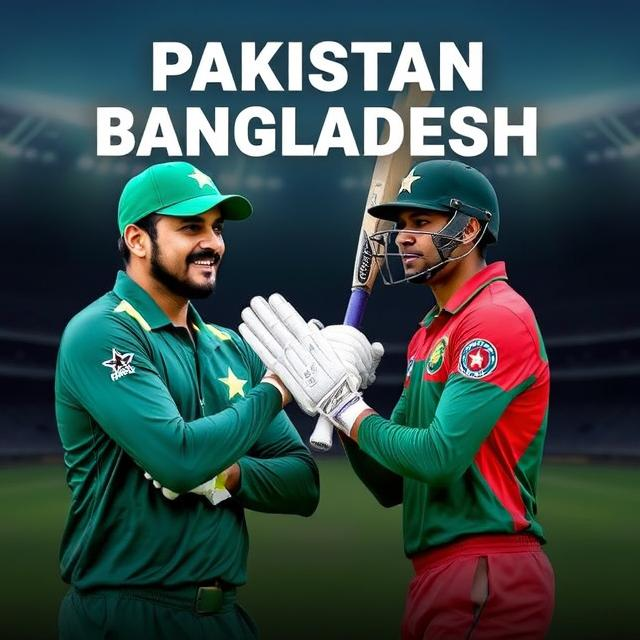Pakistan Cricket Team Jersey Numbers: A Deep Dive into the History and Significance

Pakistan Cricket Team Jersey Numbers: A Deep Dive into the History and Significance
Unveiling the stories behind the numbers donned by the mighty Pakistan cricket team, we delve into a world of tradition, superstition, and the evolving dynamics of the sport. From legendary figures to contemporary stars, each number carries a unique narrative, echoing the team’s triumphs and tribulations.
This article explores the fascinating history of Pakistan cricket jersey numbers, analyzing the players associated with specific numbers, and examining the shifting trends in the sport and how they influence these choices.
A Legacy of Legends
The numbers on Pakistan cricket jerseys are more than just arbitrary designations. They often represent a player’s position, role within the team, or even their personal aspirations. A deep look into the numbers worn by Pakistan’s past legends reveals rich anecdotes about their careers and their impact on the team’s journey.
Consider the iconic number 10, famously donned by the batting maestro Javed Miandad. He carved out a significant chapter in Pakistani cricket, scoring runs with remarkable tenacity and influencing a generation of young batsmen. The significance of number 10 for Pakistan, therefore, lies not just in its association with a great player, but in the profound impact his style and skill had on the team’s success.
Modern Era and Contemporary Choices
Moving to the present day, the numbers worn by contemporary Pakistani cricketers frequently carry the weight of their predecessors’ legacies, yet with a modern touch. Numbers like 3, 5, and 7, among others, have been prominently worn by notable players in recent times. These players’ performance and contributions to the team often determine the importance assigned to their jersey number.
The evolution of cricketing strategies has also impacted the way players approach jersey numbers. Some players might choose numbers that align with their playing style, others might adopt numbers associated with their idols.
Moreover, the growing significance of individual brands in sports has influenced this dynamic. The choice of a jersey number is now often part of a player’s branding and marketing strategy, and more often than not, is meticulously considered.
The Role of Superstition and Tradition
Within the Pakistan cricket community, there are strong undercurrents of superstition and tradition when it comes to jersey numbers. Some players might believe certain numbers bring good luck, while others may avoid numbers that hold negative connotations. These traditions, handed down through generations of cricketers, significantly shape players’ perceptions and actions related to the number they wear.
Beyond the Numbers: The Significance of Position
The number worn by a Pakistani cricketer often reflects their role on the team. The numbers typically associated with captains and other key figures frequently reflect the expectations that accompany their leadership positions.
Furthermore, numbers associated with specific positions (like wicket-keepers and fast bowlers) might hold deeper symbolic meaning. Players often identify with these positions, and their associated numbers, carrying their responsibilities and contributing to their sense of belonging.
Numbers Worn By Notable Players (Examples)
Let’s look at some examples to illustrate these points:
Often associated with a fast bowler, this number holds a specific significance, suggesting the relentless speed and aggression typically associated with such players.
A traditional number worn by a mainstay batsman, often suggesting tenacity and experience.
The Impact of Team Dynamics
Within a team, the dynamic between players plays a role in number assignments. Players might choose numbers that aren’t already taken, or they might choose numbers that represent a connection to another player. There is a lot of interplay between factors that can’t be accurately captured in this context, but there is a significant influence on a player’s choice.
Analyzing the Shifts in Trend
Over time, there have been shifts in the trends of jersey numbers in Pakistan cricket. Early on, numbers were often assigned more randomly. As the sport matured, the significance of individual players and positions became more pronounced, leading to more strategized approaches to selecting jersey numbers.
Furthermore, as Pakistani cricket gains international recognition, and there is increasing professionalization in the sport, the way players choose numbers has also changed. The strategic component, as well as personal aspirations of players, is also more heavily factored in when making these choices. This reflects a shift from more traditional practices towards more deliberate and calculated decisions.
The Future of Jersey Numbers in Pakistani Cricket
As Pakistan cricket continues to evolve and attract new talent, the choices of jersey numbers will undoubtedly continue to change. The trends, traditions, and significance associated with these numbers, however, will remain central to the rich tapestry of the sport.
The interplay between legacy, individual aspirations, and team dynamics will shape the choices players make. It will be fascinating to observe how these numbers evolve in the future and how they reflect the changes in the Pakistani cricket scene. The numbers will continue to tell stories, shaping the narratives and the history of the sport.
Conclusion
Pakistan cricket jersey numbers are a fascinating microcosm of the sport’s rich history. From legendary figures to contemporary stars, each number holds unique significance and tells a story of dedication, skill, and achievement. Understanding the choices behind these numbers provides a richer understanding of the sport and its players, unveiling the intricate connection between individual narratives and the larger tapestry of Pakistani cricket.
The significance of jersey numbers in Pakistan cricket extends far beyond the sport itself; it reflects the social and cultural context in which it operates, demonstrating how trends, traditions, and personal aspirations weave together to create a compelling narrative.